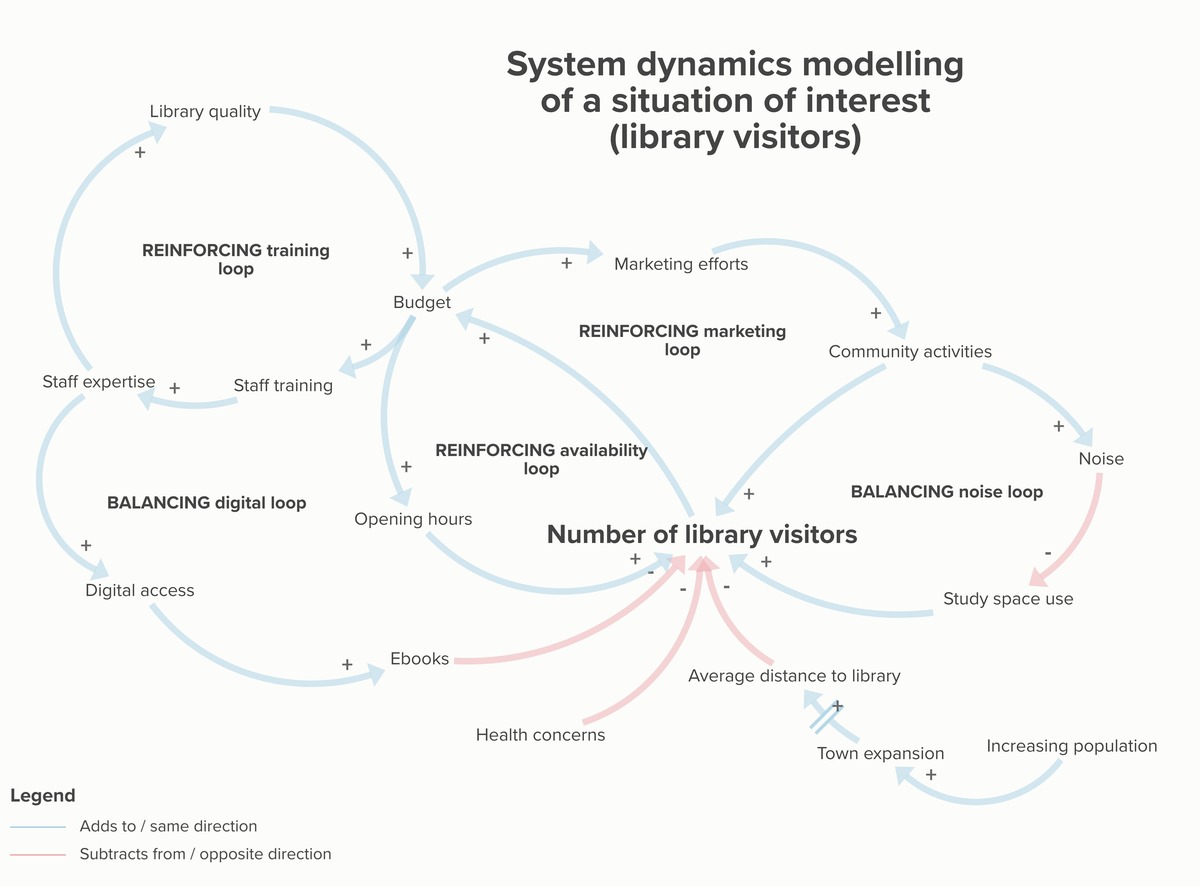TB871: Re-mapping my situation of interest
Note: this is a post reflecting on one of the modules of my MSc in Systems Thinking in Practice. You can see all of the related posts in this category.
It seems I might have jumped the gun a little when mapping my situation of concern last week. As fellow student Diana Dimitrova kindly pointed out, some of my causal links weren’t so causal, and I’d used events rather than nouns.
So now, as I come to complete Activities 2.17-2.21 I’ve had another go at mapping the situation. There’s definitely more I can add to this, which I created using kumu.

There are three ‘reinforcing’ loops in the above diagram and two ‘balancing’ loops. The reinforcing loops have either no, or an equal number of, subtracting/opposing causal connections (indicated in red). The balancing loops have an odd number of these kinds of connections.
It’s worth noting that this is all theoretical at the moment, I haven’t actually checked on, for example, the relationship between number of people visiting the library and budget allocation.
REINFORCING loops
- Training: The more budget is available, the more staff training can be done. This improves staff expertise, which in turn increases library quality. In turn, this unlocks more budget.
- Marketing: The more budget is available, the more marketing can be performed. This attracts more people to more community activities, which increases the number of library visitors, which in turn unlocks more budget.
- Availability: The more budget is available, the longer the library opening hours. This increases the number of people visiting the library, which in turn increases the budget available.
BALANCING loops
- Digital: The more budget is available, the more staff training can happen, which in turn improves staff expertise. This improves users’ access to the library’s digital provision, which increases ebook usage, and reduces the number of people visiting the library. This has a knock-on effect on budget.
- Noise: The more community activities are run in the library, the greater the amount of noise. This has a detrimental effect on use of the study space, which in turn reduces the number of visitors to the library. This has an effect on the budget, which reduces marketing spend and the number of people attending community activities.
In writing the above, I’ve come to realise how all of my loops pass through the ‘budget’ node. While I’m sure that this is indeed a leverage point, there must be others in the system which I haven’t spotted. I need to go back and identify these.
Unless, of course, it is all about the budget, in which case libraries either need to massively diversify into paid services, or we need more public funding (or both).
